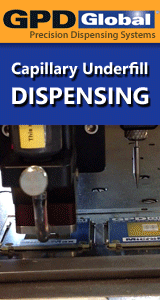Printed Circuit Board Assembly & PCB Design Forum
SMT electronics assembly manufacturing forum.
- SMTnet
- »
- Electronics Forum
- »
- AOI: Comparisons
AOI: Comparisons
![]() Hi, does anyone have any real experience in using the follow...
- Aug 17, 2004
by
Rob
Hi, does anyone have any real experience in using the follow...
- Aug 17, 2004
by
Rob
![]()
![]()
![]() Have you checked up on Samsung's AOI? I hear the provide a ...
- Aug 18, 2004
by
Have you checked up on Samsung's AOI? I hear the provide a ...
- Aug 18, 2004
by
![]()
![]() I have no experience working with the systems you listed abo...
- Aug 23, 2004
by
MikeJ
I have no experience working with the systems you listed abo...
- Aug 23, 2004
by
MikeJ
![]()
![]()
![]() Hi Mike,
Thanks for the comments.
We are upgrading o...
- Aug 24, 2004
by
Rob
Hi Mike,
Thanks for the comments.
We are upgrading o...
- Aug 24, 2004
by
Rob
![]()
![]()
![]() hi, i am responsible for several SJ50s on our site. i will t...
- Aug 24, 2004
by
hi, i am responsible for several SJ50s on our site. i will t...
- Aug 24, 2004
by
![]()
![]() Hi JB,
Thanks for the reply.
I have a few questions if t...
- Aug 24, 2004
by
Rob
Hi JB,
Thanks for the reply.
I have a few questions if t...
- Aug 24, 2004
by
Rob
![]()
![]()
![]() 1. quite easy. if you create a smart database for yourself t...
- Aug 24, 2004
by
1. quite easy. if you create a smart database for yourself t...
- Aug 24, 2004
by
![]()
![]() Thanks very much for your help JB.
Cheers,
ROb.
...
- Aug 24, 2004
by
Rob
Thanks very much for your help JB.
Cheers,
ROb.
...
- Aug 24, 2004
by
Rob
![]()
![]()
![]() Rob,
I'm also in the evaluation stage. I've seen demos of t...
- Aug 30, 2004
by
Rob,
I'm also in the evaluation stage. I've seen demos of t...
- Aug 30, 2004
by
![]()
![]() Mike:
When you stated that you are looking for a differen...
- Aug 30, 2004
by
Mike:
When you stated that you are looking for a differen...
- Aug 30, 2004
by
![]()
![]()
![]() We have the 1X scanners and have not tried the 2X scanner an...
- Aug 30, 2004
by
MikeJ
We have the 1X scanners and have not tried the 2X scanner an...
- Aug 30, 2004
by
MikeJ
![]()
![]()
![]() I need to address the issue for colorful display on solder j...
- Aug 31, 2004
by
I need to address the issue for colorful display on solder j...
- Aug 31, 2004
by
![]()
![]() Rob and JohnR
The ASC/Samsung VSS Series AOI uses white L...
- Aug 31, 2004
by
Rob and JohnR
The ASC/Samsung VSS Series AOI uses white L...
- Aug 31, 2004
by
![]()
![]() Thanks for your input.
Have you or anyone considered Cyb...
- Aug 31, 2004
by
Thanks for your input.
Have you or anyone considered Cyb...
- Aug 31, 2004
by
![]()
- SMTnet
- »
- Electronics Forum
- »
- AOI: Comparisons







